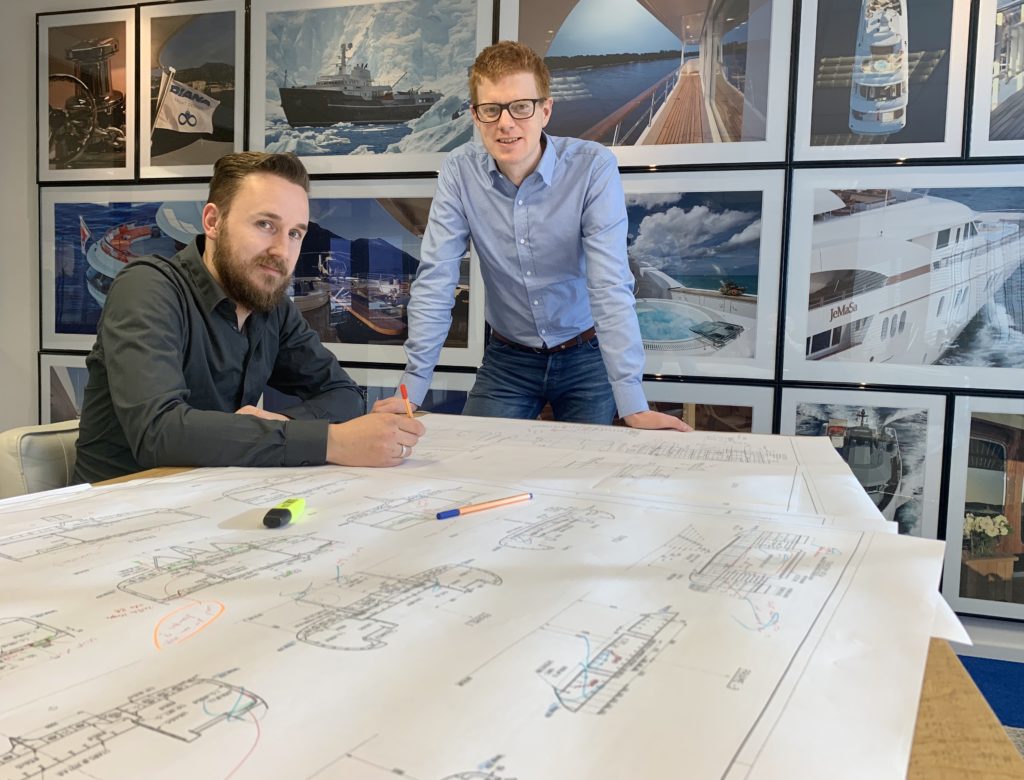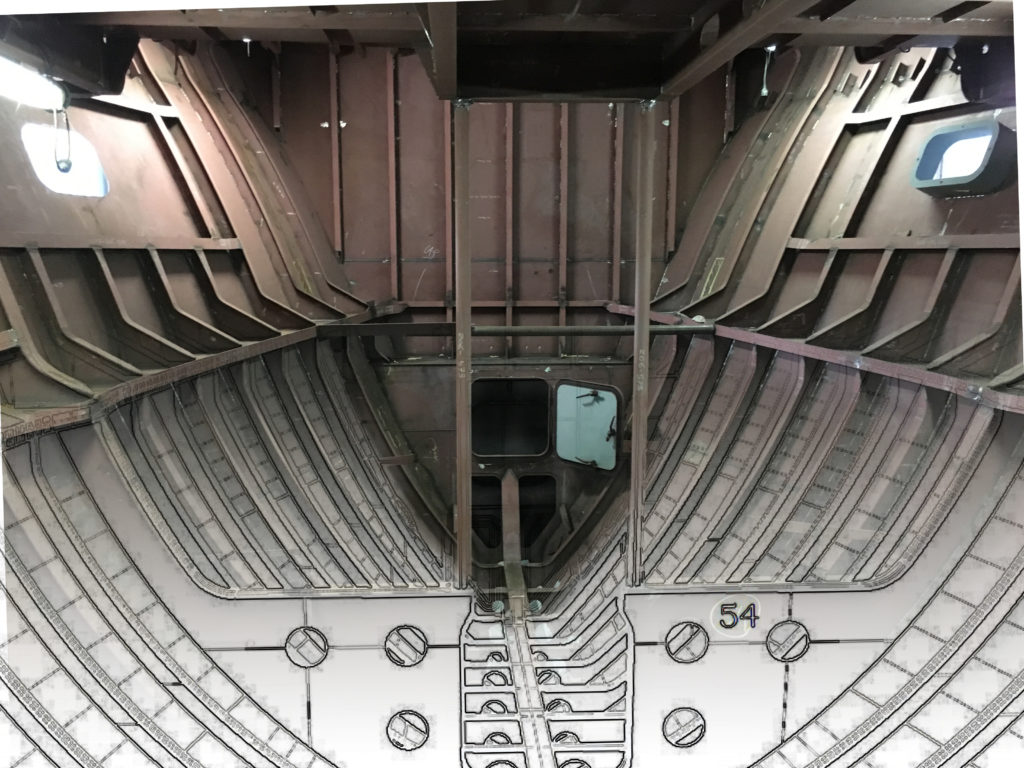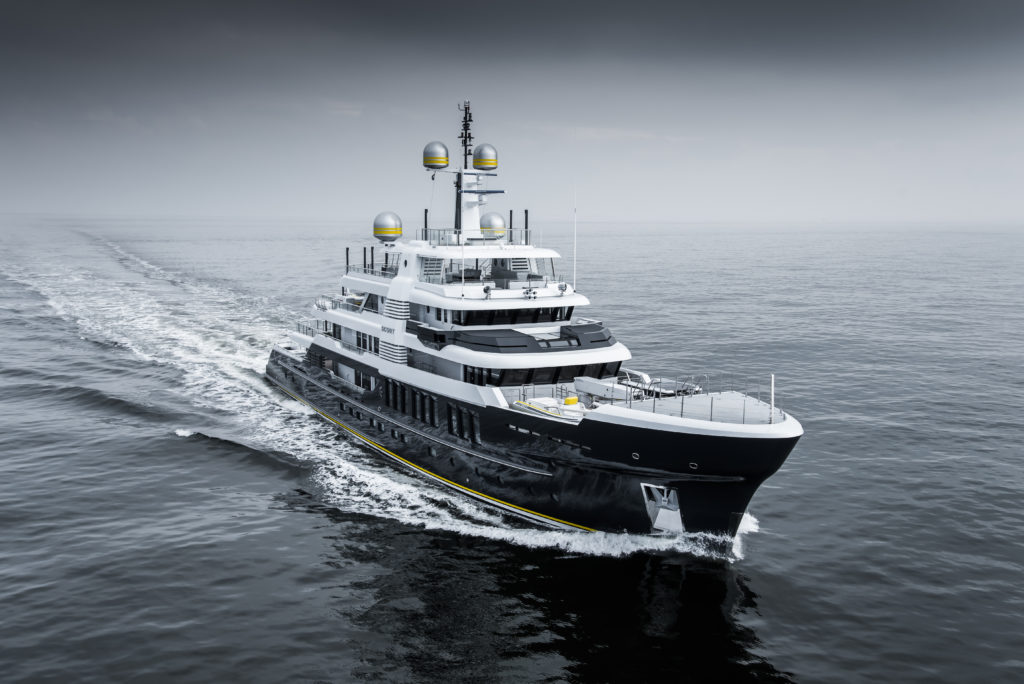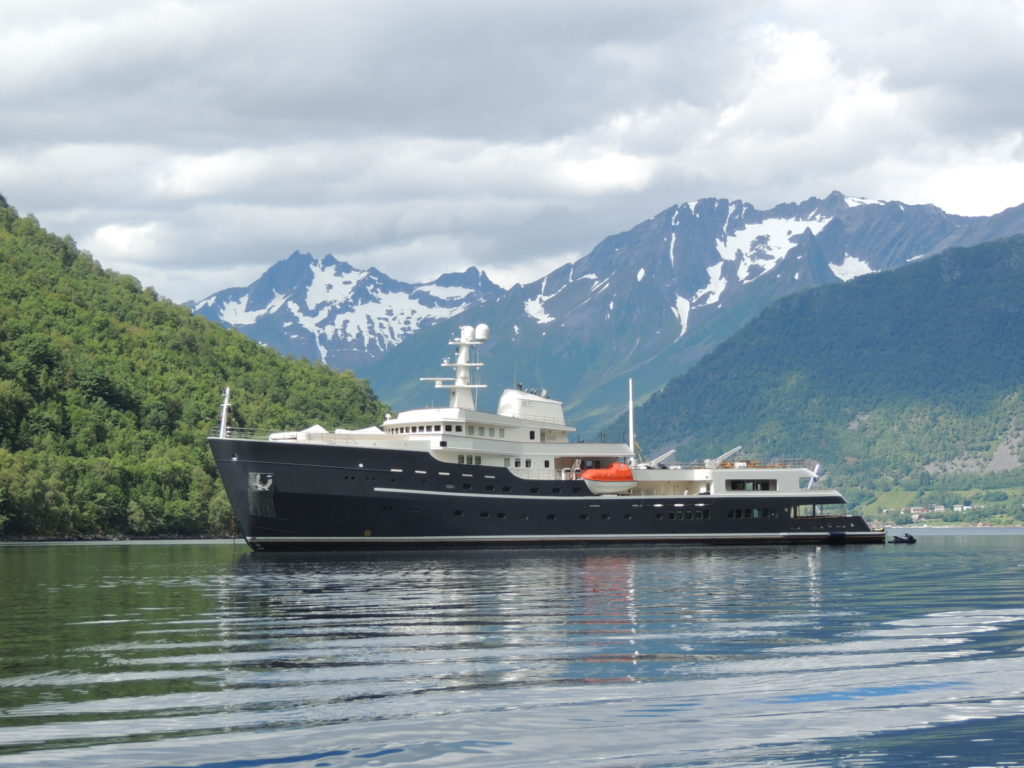A Day in the Life of a Naval Architect
Written by:
Georgia Tindale
Publication:
SuperYachtTimes
When looking at all of the available careers in the superyacht industry, it has to be said, that of the naval architect seems to be one of the least well understood by outsiders. Incorporating within it elements of mechanical, electrical, software, electronic and safety engineering as applied to the design process, shipbuilding, maintenance and operation of marine vessels, the day-to-day life of a naval architect is a varied and complex one – and one about which very few people are knowledgeable. On a daily basis, the tasks of a superyacht naval architect include research, design development and evaluation, the formulation of safety regulations and damage-control rules for yachts and so much more. To discover more, we speak to Bart de Haan, Director of Operations and Nick Tot, Naval Architect at the Dutch design and naval architecture studio, Diana Yacht Design to gain a fascinating insight behind the scenes of life as a superyacht naval architect.
In brief, what does the role of a naval architect entail? What are the different stages of your involvement in a project?
Nick Tot: A naval architect has to look at the big picture. We are the link between all other parties involved in a project and we make sure that after everything has been put together, the result is a product we all can be proud of. A ship that looks great, functions correctly and is safe in every aspect.
Bart de Haan: The involvement of the naval architect almost always starts in the pre-contract stage. In this stage, we are involved in the creation of the general arrangement and specifications and we take care of the preliminary hull shape in combination with the design particulars. Based on our data and experience, a naval architect can check if the proposed design will work when it becomes a real ship. After the client begins the building process, the naval architect continues this design spiral, checking all main particulars of the hull form numerous times to reach a final hull shape where safety, speed and comfort fulfil all necessary requirements.
At the same time, we also start the structural design and engineering of a vessel. In my view, the structural design is the most underestimated part of yacht design as it is the backbone of the yacht. We always aim to add just enough construction, too much will result in a heavy and inefficient ship, too little will result in a weak and flexible structure which is difficult to build. In our office at Diana Yacht Design, we engineer every technical part of the yacht, including the ship’s systems layouts of technical spaces and complex sections such as hull doors, helidecks and crane arrangements.
How closely do you work with the exterior designer on a project? Talk me through how this relationship functions.
Nick Tot: When working with an exterior designer, we are responsible for making their vision into reality so close cooperation is extremely important. We follow the design as much as possible, but if something needs to be changed we make sure to run it by the designer first. Together we always find a way to make things work.
Bart de Haan: The relationship between the exterior designer and the naval architect is very close during a project. An important design feature of a hull shape is its appearance, as this should also match the overall design of the yacht. Within this nice looking shape, the naval architect has to include all of the other important particulars. Everything the exterior designer designs will need to be built and therefore must be buildable. This is what the naval architect takes care of by making construction drawings. In these drawings, the design, the builder’s wishes and class and flag requirements all come together to form the final product design. This is what we do, from large hull construction sections down to small details in the exterior design.
Talk me through what a typical day in your job looks like.
Bart de Haan: On a typical day, I work with the team on one of our new-build or refit yacht projects. I work on the models and drawings which are needed for a shipyard to build the yacht or to make the required modifications. During the day there is close contact with all stakeholders in the building process and so you are really in the middle of everything.
Nick Tot: That is the best part of the job, there is no such thing! Depending on what stage a project is in, our tasks vary greatly. In the early stages, we will focus on the basics, such as the shape of the hull, the ship’s weight, the tank layout and so on. While in the more advanced stages we go into great detail, such as making the layout for a wing station or determining where the fire hydrants need to be placed.
Why did you decide to work for Diana Yacht Design?
Bart de Haan: Diana Yacht Design offered me a job when I finished my naval architecture studies – actually, this was my first contact with the yachting world, I wasn’t aware of what to expect but over the past 15 years of working here it has never disappointed me!
Nick Tot: After my graduation thesis at Diana Yacht Design, they offered me a job and I jumped at the chance. Having an easy-going, down to earth attitude is basically a job requirement here, that’s what first drew me in. What is more important though is why I stayed. At Diana, I have had every chance to express myself and evolve in any direction I set my mind to. I went from being ‘wet behind the ears’ to running my very own projects in no time at all!
What are your favourite elements of your role as a naval architect?
Bart de Haan: My favourite part of my role is being of added value to the building process and being able to combine everybody’s wishes to make a beautiful yacht which is technically sound.
Nick Tot: Seeing through the entire process from beginning to end. As a naval architect, I am in a unique position that involves me from the first sketches on paper to the sea trials with the finished vessel. There is no other discipline that has that perk.
What are the most challenging aspects of your role as a superyacht naval architect?
Bart de Haan: The most challenging part is determining what is most important to a client. As a naval architect, there is not always contact with the end-user as there are all kinds of representatives and other people in between. When you are fully aware of what it is that a client expects when his boat is finished then you can take care of it directly from the start.
Nick Tot: Every project has its challenges, so this is quite a difficult question to answer. What is easy on one project might not be on another. I will say though that refit projects have the most challenges in general. Making different elements work together on a vessel which are not designed to do so can be quite the head-scratcher!
What have been some of your favourite projects to work on and why?
Bart de Haan: Honestly speaking, I’m proud of all the projects I have worked on. But to name a few of the recent ones, Scout has to be one of them as it is my biggest yacht project, with an ice-classed hull and a stunning but challenging design. Others are Brigadoon and Viatoris which have both won awards for being the best yachts in their categories: this is a huge compliment for the whole build team.
Nick Tot: The first project that comes to mind is Legend. As I mentioned before, refits bring many challenges which you just don’t have in a new build project. But since almost nothing was left untouched, Legend could be better described as a rebuild, which was complicated further by a refit which had been done some 10 years earlier. What made this one of my favourites was seeing the process of a tired and old (but still very well built) yacht being transformed into an awesome looking expedition vessel. Winning the world superyacht award for the best rebuild was just the icing on the cake.
What was the most challenging moment you have come across whilst working on a project?
Bart de Haan: For me, one of the most challenging moments was when Hakvoort sold their first 60-metre plus project, now sailing as Just J’s. It was twice as big as the biggest they had built before in terms of volume, this was the same for our team. Working on a yacht of this size needed a completely different approach. We managed to make it work in the end and are now busy with the fourth 60-metre plus project with Hakvoort.
What was it that drew you to the yachting industry specifically and did you consider working within other industries?
Nick Tot: Yachting is quite unique, in the sense that we are building toys for people who are very excited and passionate about the whole process, wanting their yacht to be to their personal taste and keen to have equipment on board just because it is cool. I get to make things that you just don’t see in any other industries because they are considered unnecessary or too expensive. Where else would you be able to redesign an entire bow section, make bigger hatches and install a bigger crane, just because the owner decided to have a five-person submarine instead of a three-person submarine?
What would be your advice for a young person looking to become a naval architect?
Bart de Haan: Study maritime engineering, do useful internships, discover what your interests are and become good at them.
Nick Tot: Usually schools and universities have some sort of orientation day a few times a year where students talk about their experiences. Go along to those, talk to the students and discover first-hand what their experiences are, asking as many questions as you can think of while you’re there.
During your studies, contact companies you might want to work for once you have graduated and see if they can offer you a job during weekends or your school vacations. Even if it is just sweeping the floor of a metal workshop, the employees you meet along the way can teach you things you just don’t learn in school. About half of my colleagues ended up at Diana Yacht Design because they either did an internship or vacation work.
Is there anything else you would like to add?
Bart de Haan: In my view, the role of a naval architect offers one of the most versatile and challenging jobs in the industry – I would recommend it wholeheartedly.





